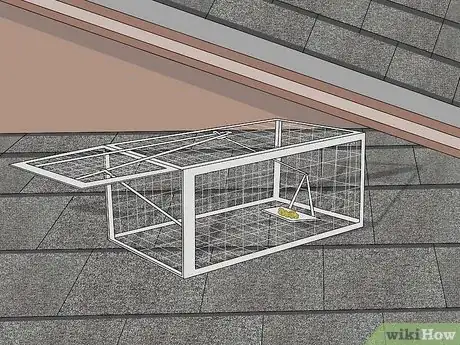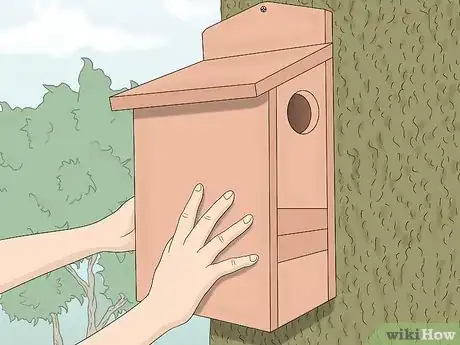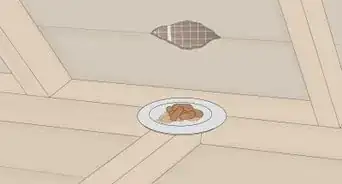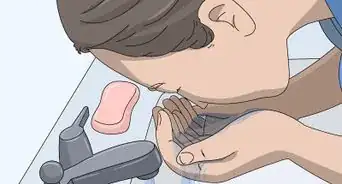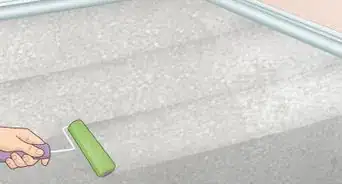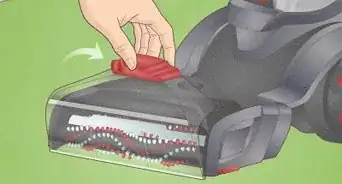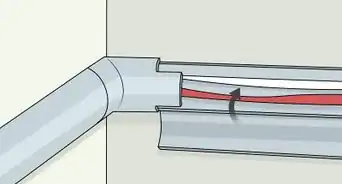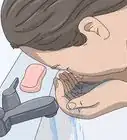This article was co-authored by Chris Parker. Chris Parker is the Founder of Parker Eco Pest Control, a sustainable pest control service in Seattle, Washington. With over seven years of experience, Chris specializes in Integrated Pest Management and doesn’t use any chemicals for pest removal. He offers removal services for ants, rodents, fleas, spiders, wasps, and more. Chris is a certified Commercial Pesticide Applicator in Washington State and received his bachelor’s from the University of Washington.
There are 8 references cited in this article, which can be found at the bottom of the page.
This article has been viewed 190,646 times.
Animals living in your attic can cause damage to the wiring, plumbing, and structure of your home while also bringing in diseases. Strategies for keeping an attic animal-free mainly involve consistent home inspections and maintenance. Block any animals from entering your home and keep them out of your home to get them gone for good.
Steps
Blocking Entry
-
1Inspect the exterior of your home. Most animals enter attics through small holes or man-made openings such as vents and chimney pipes. Larger animals will even bite and claw through weak spots in the exterior to create an entrance to the attic. The most effective way to keep animals out of your attic is to walk the perimeter of your home and find and eliminate any vulnerable areas in your home's exterior.[1] [2]
-
2Fix holes in your roof. Look for any holes in the roofing or between the roof and the siding or brick.[3] Lift up the damaged shingle and the ones surrounding it. Remove the nails that are underneath with a pry bar then slide the damaged shingles out. After patching the hole in the roof, replace the shingles with new ones, hammer the nails back in, and secure everything by covering the nail heads in roof cement.[4]
- Keep in mind that even small holes can be a potential problem because squirrels can fit through holes 1.5 inches (3.8 cm) in diameter, and bats can get through gaps as small as .38 inches (.95 cm).
Advertisement -
3Install vent covers. Get ½ inch (1.27 cm) or ¼ (0.64 cm) inch hardware cloth from a box or hardware store. Make sure that the hardware cloth is made of wire, not mesh. Securely fasten the cloth over any vents on the roof that may provide access to the attic.[5]
- Don’t forget to install covers on your soffit vents as well. Your soffit vents are located on the underside part of the roof that hangs over the sides of your home.
-
4Install a chimney cap. First, inspect the chimney with a flashlight and look for any signs of animal inhabitation. Once you’re sure there are no longer animals inside the chimney, install an animal-proof chimney cap that will allow smoke to escape without giving animals an entrance.[6]
-
5Trim or remove tree limbs and branches. If you have trees that extend over your roof, you may want to trim back the branches to restrict access to the roof. Remove larger branches with a pruning saw or chain saw. Make sure that you trim any branches that are within 8 feet of your home to keep squirrels from being able to jump to the roof.[7]
-
6Set up traps for the animals in your attic.[8] There are many ways that you can trap animals, but if they're legal in your area, live catch and release traps are the best because they’re humane and they’re available in a wide range of sizes. Set up the traps with a desirable piece of food and the animals will be drawn to it. If there’s an opening somewhere, doing this will give you an idea about where it is and keep animals from getting into your home until you can find and fix the opening.
- Make sure to check your traps at least every 24 hours to keep any trapped animals from dying of thirst or starvation. You can then either release the animal into your yard or contact a wildlife rescue or animal control to remove it for you. Do not take the animal somewhere else and release it—this is illegal in most places.
Deterring Animals
-
1Remove food sources. You can help make your attic less inviting by removing easily accessible food sources from the exterior of your home and your yard. Keep your trash cans secured, avoid keeping any pet food accessible outside, and pick up any fruit or nuts that have fallen from trees in your yard.[9]
-
2Skip the mothballs, ammonia, and noise machines. Contrary to what many think, these methods won’t get rid of animals living in your attic or keep them away, especially raccoons and mice.[10] Additionally, mothballs are carcinogens that can cause a potentially harmful environment for humans when not handled properly.[11]
-
3Put up a squirrel nesting box on your property. It may be impossible to eliminate squirrels from your property, especially if you live in a wooded area or value your trees, but you can provide a comfy alternative to your attic in hopes that they choose the nest that’s easier to reach.
Community Q&A
-
QuestionCan mites live in an attic?
 Community AnswerYes. Mites often live in attics or basements, or anywhere it is dusty and dark.
Community AnswerYes. Mites often live in attics or basements, or anywhere it is dusty and dark. -
QuestionShould I be concerned if there is squirrel feces in the attic?
 Community AnswerYou should clean up the feces for health purposes, but otherwise, I wouldn't worry unless it continues to appear. If it does, you likely have squirrels in your attic.
Community AnswerYou should clean up the feces for health purposes, but otherwise, I wouldn't worry unless it continues to appear. If it does, you likely have squirrels in your attic. -
QuestionCan critters get in the attic from the air vent or gables on the front or at the side of the house? Should there be screens covering them?
 Shibesh DhunganaCommunity AnswerYes, small critters can get in the attic from air vents and gables. It'd be wise to use screens or other kinds of coverings.
Shibesh DhunganaCommunity AnswerYes, small critters can get in the attic from air vents and gables. It'd be wise to use screens or other kinds of coverings.
Warnings
- Check local regulations on releasing animals back to the wild. You need to make sure you release any animals you trap in the proper locations.⧼thumbs_response⧽
- Mice, rats, bats, and raccoons can carry diseases. Be careful if you find animals in your attic. Don't provoke animals or try to trap them yourself unless you are very knowledgeable on animal trapping.⧼thumbs_response⧽
- Consult a professional if you aren’t comfortable with making repairs and installations to your roof; These tasks are dangerous.⧼thumbs_response⧽
References
- ↑ https://www.terminix.com/blog/home-garden/keep-critters-out-of-attic
- ↑ Chris Parker. Founder, Parker Eco Pest Control. Expert Interview. 18 February 2021.
- ↑ https://www.terminix.com/blog/home-garden/keep-critters-out-of-attic
- ↑ https://www.bobvila.com/articles/roof-leaking-repair/#.WTB-H2jyuUk
- ↑ http://www.mnn.com/your-home/at-home/stories/how-to-keep-squirrels-out-of-your-attic
- ↑ http://www.humanesociety.org/animals/resources/tips/keep_wildlife_out.html
- ↑ https://www.terminix.com/blog/home-garden/keep-critters-out-of-attic
- ↑ Chris Parker. Founder, Parker Eco Pest Control. Expert Interview. 18 February 2021.
- ↑ http://wildliferemovalusa.com/animal-how-to.html






